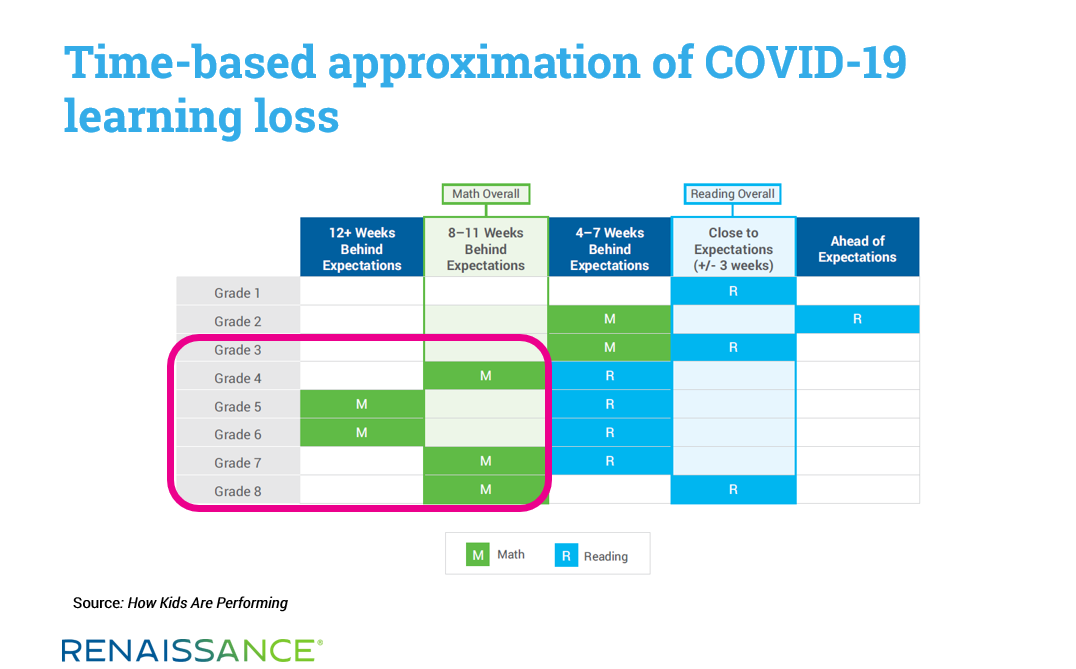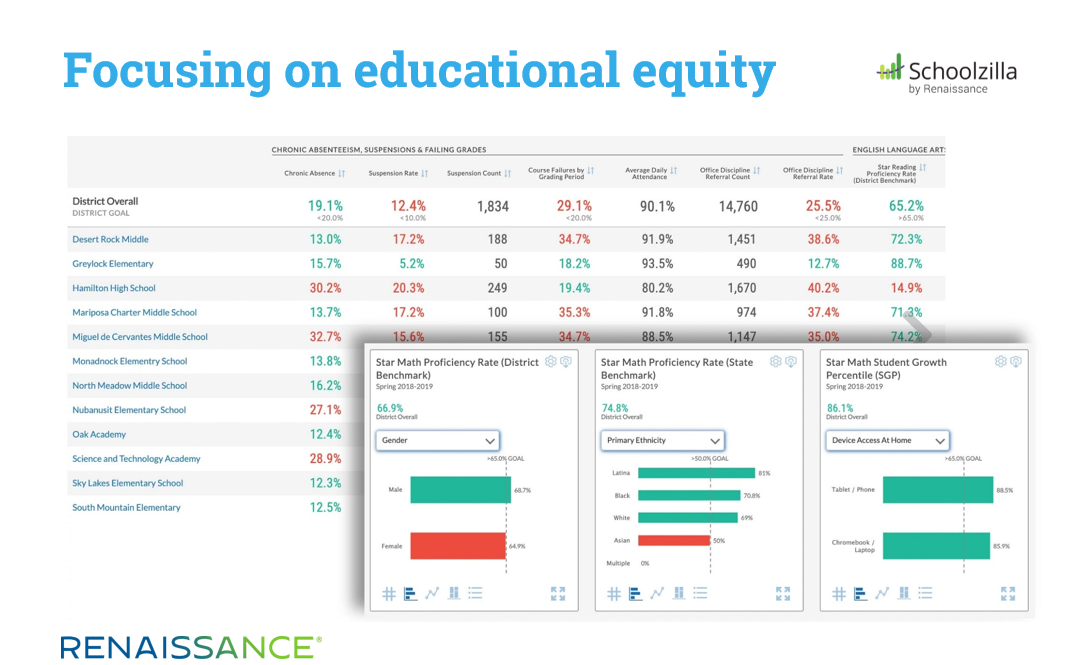February 19, 2021
The COVID-19 pandemic has had a major impact on education, from widespread building closures to concerns over the scale of learning loss caused by the disruptions. As of February 19, 2021, the federal government has passed two pieces of legislation—CRRSA and the CARES Act—that include stimulus funds for K–12 schools and districts, with further assistance likely on the way.
Recently, we had the opportunity to talk about this funding with Darice Keating, Senior Vice President of Government Affairs; Rita Wright, Director, National Academic Advisors; and Roberta Bergman, Senior Funding Consultant. Here are the highlights of our conversation, along with notes about what they’ll be watching for in the weeks and months ahead.
Q: What do educators need to know about CRRSA and the CARES Act? How much funding is available?
Darice Keating: In March 2020, the federal government passed the Coronavirus Aid, Relief, and Economic Security (CARES) Act, which provides $13.2 billion for the Elementary and Secondary Emergency Relief (ESSER) Fund. These funds are distributed to districts based on the Title I funding formula from ESSA. States have one year to distribute the funds, and districts must spend the funds by September 30, 2022.
In December 2020, the federal government passed a second piece of legislation: the Coronavirus Response and Relief Supplemental Appropriation Act of 2021 (CRRSA). This provides an additional $54.3 billion for ESSER—funds that are known as “ESSER II.” Again, these funds are distributed to districts based on the Title I funding formula from ESSA, and states have one year to distribute the funds. Districts must spend ESSER II funds by September 30, 2023.
The US Department of Education’s Office of Elementary & Secondary Education (OESE) maintains a variety of ESSER-related resources, including responses to frequently asked questions and a chart comparing ESSER and ESSER II. For specific information on when these funds will be distributed to districts, educators should consult their state department of education’s website.
Q: How can districts use the ESSER and ESSER II funds?
Darice Keating: Districts can use these funds for a variety of purposes, including cleaning and sanitizing facilities; purchasing technology—hardware, software, and connectivity—to support student learning; and planning and implementing activities for summer learning or supplemental afterschool programs, which can be delivered either face-to-face or online.
These funds can also be used for activities that address the unique needs of special populations: low-income students, children with disabilities, English Learners, racial and ethnic minorities, students experiencing homelessness, and foster-care youth.
Student learning loss is clearly an important topic this year, and districts can use the ESSER II funds in particular to address learning loss—and I’m quoting from the legislation here—by:
- Administering and using high-quality assessments that are valid and reliable, to accurately assess students’ academic progress and assist educators in meeting students’ academic needs, including through differentiating instruction.
- Implementing evidence-based activities to meet the comprehensive needs of students.
- Providing information and assistance to parents and families on how they can effectively support students, including in a distance learning environment.
- Tracking student attendance and improving student engagement in distance education.
Both ESSER and ESSER II funds can be used for expenses dating back to March 13, 2020, which is when the national emergency was declared due to COVID-19.
Again, I’d direct readers to the OESE website for the most detailed and up-to-date information.
Q: Do CRRSA and the CARES Act include other funding for education?
Darice Keating: Yes. The CARES Act set aside $3 billion for the Governor’s Emergency Education Relief Fund (GEER), to be distributed to the states through formula grants. CRRSA included $1.3 billion in supplemental GEER awards (known as “GEER II”) that governors can use for K–12 and higher education, along with $2.75 billion in Emergency Assistance to Non-Public Schools (EANS) awards. The EANS funds are allocated based on each state’s share of low-income children enrolled in non-public schools, while GEER and GEER II funds are allocated based on a state’s population aged 5–24 and the proportion of children whose families fall below the poverty line.
Like the ESSER funds, GEER funds must be spent by September 30, 2022, while GEER II and EANS funds must be spent by September 30, 2023.
The OESE website includes detailed information on GEER, GEER II, and EANS. We should note that each state is developing its own application process for EANS funds, so educators in parochial and private schools should check their state department of education’s website for details.
Q: Do Renaissance products align with CRRSA and CARES Act funding?
Rita Wright: Absolutely. When school buildings closed last spring due to the pandemic, many educators had to scramble to adapt their familiar classroom routines to a distance-learning environment. Over the past year, the number of students using our myON digital reading platform has grown greatly, and a number of districts have opted to enable at-home quizzing in our Accelerated Reader program.
We’ve also seen a major increase in the number of students using our Freckle platform, which provides differentiated practice in math, ELA, science, and social studies. I think some educators were surprised when we released the How Kids Are Performing report last fall, which showed that the “COVID-19 Slide” was greater in math than in reading, and that middle school students were impacted the most. This makes it especially important to accelerate students’ math growth this year, and Freckle Math is playing an important role here.

myON, Accelerated Reader, and Freckle can be used in any learning environment (in-person, remote, or hybrid), in afterschool programs, and over the summer. We’re also continuing to enhance these programs to meet students’ and educators’ needs. myON, for example, now has a low-bandwidth reading option for students without reliable access to high-speed internet, while Freckle Math offers a more student-friendly experience on mobile devices.
Q: What about assessments and reporting?
Rita Wright: As Darice mentioned, ESSER II funds can be used for valid and reliable assessments to assess student progress and identify instructional needs, and our Star Assessments are designed for exactly this purpose. The cancellation of state testing last spring makes it especially important for schools and districts to make full use of interim assessments this year, and we’ve created a variety of resources to support remote administration of Star. This includes the ability to flag remote administrations when reporting assessment results, which is a requirement in some states and is something that many administrators are watching closely.
Star’s computer-adaptive assessments are also available in Spanish, to support the needs of dual-language, bilingual, and immersion programs. Last fall, we also launched Star CBM, which provides curriculum-based measures in both reading (K–6) and math (K–3). Like the computer-adaptive Star assessments, the curriculum-based measures are designed for both screening and progress monitoring, and they can be administered either in-person or remotely.
Educational equity is also a very important issue this year, and districts are using our Schoolzilla platform to disaggregate data by student subgroup. Schoolzilla brings together data stored in the Student Information System with data from Star and other programs, providing a comprehensive view of attendance and performance district-wide, by school, and by subgroup, as shown in the sample below:

Q: What other funding sources should educators be looking at, in addition to the COVID relief funds?
Roberta Bergman: At this point in the school year, educators are often looking ahead to summer and thinking about funding for their summer reading and math programs. As Darice mentioned, ESSER and ESSER II funds can be used for afterschool programs and for summer learning, and there are a variety of other summer funding sources as well, which we’ve outlined in this document. These sources fall into three broad categories:
- Federal funding, which includes both formula funds (such as Title I, III, IV, and IDEA/CEIS) and discretionary funds, such as Comprehensive Literacy State Development Grants and Striving Readers Comprehensive Literacy Grants.
- District and school funding, including unspent dollars in school or district budgets, dollars from fundraising activities by teacher associations or parent groups, etc.
- Foundation and corporate grants and contributions for education—particularly those that focus on summer learning.
I’d invite readers to visit the Funding pages on our website for more information about both summer funding and the other funding sources we’ve mentioned in this discussion, including CARES and CRRSA. These pages also host a variety of resources, such as funding correlation documents for Renaissance products, a grant writing dictionary, and more.
Q: Is there additional stimulus funding on the horizon? What do you expect in the coming weeks and months?
Darice Keating: A proposed piece of legislation called the American Rescue Plan Act (ARPA)* includes further funding for K–12 education, particularly to support the safe reopening of school buildings. Of course, we know that there is strong interest in understanding the impact of COVID-19 on learning, and on accelerating students’ learning during this unusual time, and I expect these issues to continue to receive a lot of focus.
Dr. Miguel Cardona, who’s the nominee for Secretary of Education, has said that closing the digital divide will be one of his top priorities, so I also expect a continued focus on expanding students’ access to both devices and Wi-Fi.
(*NOTE: On March 11, the federal government passed the American Rescue Plan Act of 2021, which includes more than $122 billion for K–12 districts. This funding will be allocated according to the Title 1 formula, in the same way as CARES and CRRSA. The funds can be used for addressing needs related to COVID-19, similar to CARES and CRRSA.
Recognizing the impact to students during the pandemic, the legislation requires districts to reserve at least 20 percent of their new funding to address learning loss, and requires states to reserve 5 percent to address learning loss.)
Rita Wright: There’s no denying that distance learning has forever changed how we teach kids. Even when all buildings have reopened, some parents will decide to keep their children enrolled in distance learning, and there will still be times—due to hurricanes, floods, snowstorms, etc.—when schools have to quickly transition from in-person to remote instruction.
I think the investments that districts have made in technology over the past year have shown that learning can continue outside of the building and outside of the traditional school day. I expect that many districts will use this technology over the summer, whether in formal summer school programs or through informal reading and math activities designed to keep kids engaged and to prevent them from losing ground over the summer months.
When speaking with educators, I remind them that myON, Accelerated Reader, Freckle, and Star can all be used over the summer—and that providing students with access to engaging activities is key to ensuring that their learning continues.
Learn more
Explore funding information and resources for Renaissance products by visiting our Funding pages. Also, please contact us with any questions, or to discuss purchasing or piloting our programs. We’re here to help.

